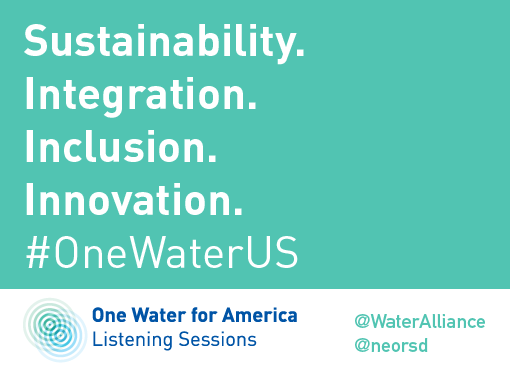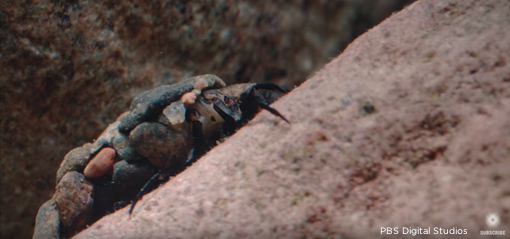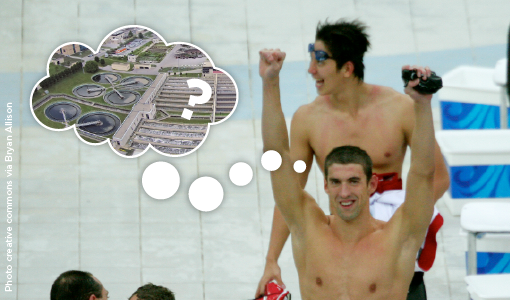
SPORTS: What would happen if Michael Phelps tried swimming in our tanks?
Posted by Jared Shepherd
- 47121 Views
- August 8th, 2016
- in Miscellaneous
- No Comments
As swimmer Michael Phelps places more gold medals around his neck during these Olympic Games in Rio, we wondered how he’d fare in an environment more unusual than a 50-meter chlorinated pool.
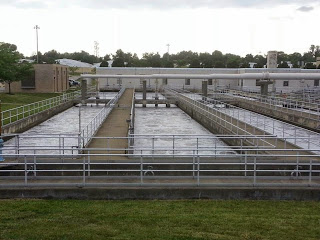 |
| Southerly first-stage aeration tanks |
Could Phelps swim in one of these long bubbling channels known as an aeration tank? or perhaps the round in-ground-pool-like tanks nearby?
First, such a thing would not be a good idea, and the topic is not an invitation to try it. But second, the hypothetical does make for interesting discussion regarding the treatment process and the water’s physical properties.
We
asked our Easterly Wastewater Treatment Plant Assistant Superintendent
Dan Smith that question, turning our attention to two tanks along
our common tour route: our clarifiers, and our aeration tanks.
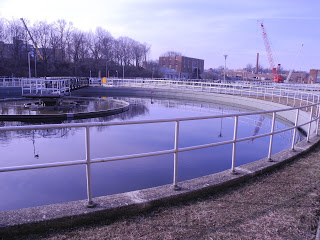 |
| Easterly clarifiers |
The clarifiers
slow the incoming wastewater down, which allows heavy particles to sink
to the bottom while floating grease is skimmed off the top. The aeration
tanks are pumped with oxygen bubbles which sustain good bacteria; the
good bacteria consume bad bacteria in what’s known as biological
treatment.
How deep are they?
The narrow aeration channels are about 15 feet deep. The clarifiers are about 12 feet deep.
What would happen if I fell in? or if someone tried swimming in them?
(Author’s
note: When I initially posed this question to Dan, his first answer was
a simple, “Blecch.” But he expounded…) If someone fell, it’s likely
they’d already be close enough to a railing or ledge for support. We do
have life rings stationed around our tanks for emergency assistance.
While
12 feet deep, the clarifiers’ water is still or very slow moving. If
you fell in, you likely could swim to an edge without further issue. Swimming with an Olympian’s strength in the murky waters would be gross, but doable.
The aeration tanks are different. Because a person is less buoyant in aerated water, it is much more difficult to tread water.
If Phelps swam vigorously enough, he could remain afloat. But it would not be easy. Again, this is
exactly why we have safety precautions like safety harnesses and life
rings close by in case danger strikes and a crew member falls in.
And remember, this is wastewater we’re talking about. (Which explains Dan’s “Blecch” reaction.) Many are criticizing Rio’s water quality for athletes and beachgoers, but even that is no comparison to the water making its way through our treatment process.
What would happen once I made it out safely?
All
of our treatment plants have emergency showers for the initial
decontamination. We then have personal showers for secondary clean-up,
and of course, you’d have a hospital visit for follow-up treatment.
Health and safety matter to us, just as they do to Olympic athletes. We’ll leave the swimming to the venues better suited for healthy competition.
RELATED STORIES:
- LIST: What events would we include in the Sewer Olympics?
- CAVS: The championship parade is where celebration meets sanitation
- TOUR: Christen and Ryan’s 2-minute treatment plant tour

